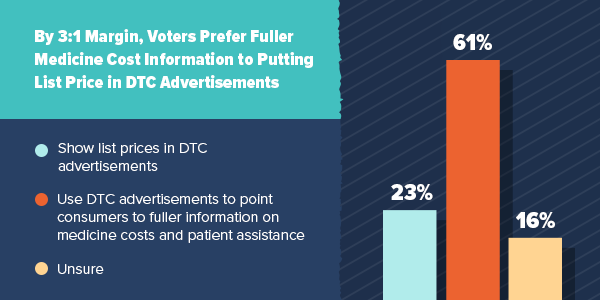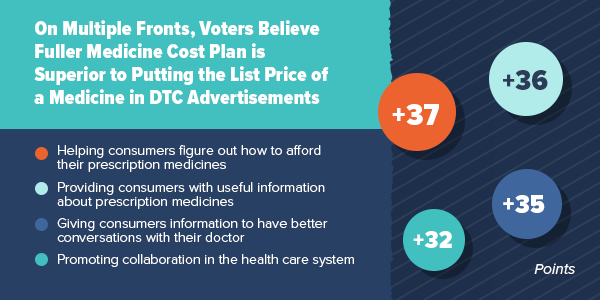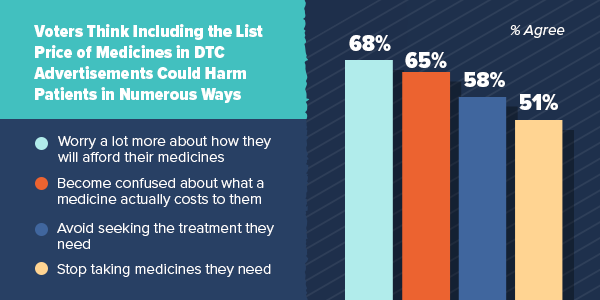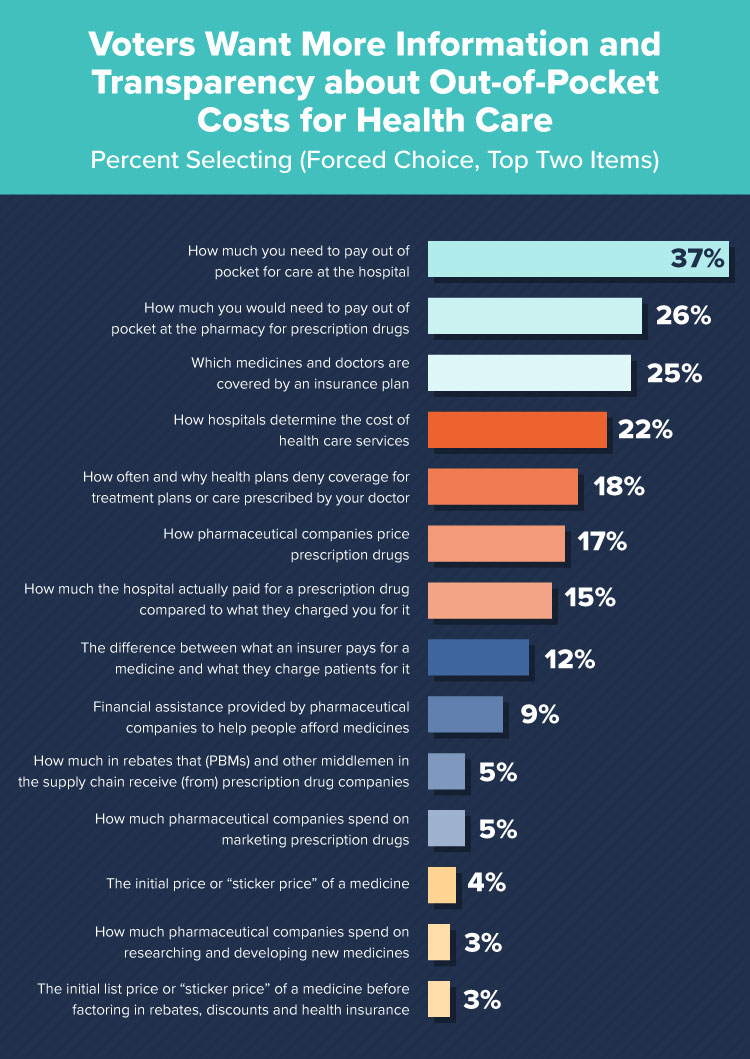The biopharmaceutical industry is answering the call to provide more information about medicine costs. As innovators of life-saving therapies, we recognize the importance of giving people the information they need to better manage their care. Throughout 2018, we went around the country to speak directly with voters, patients, provider groups and other stakeholders to learn what information would be most helpful to them. We heard four big things:
- Americans want more information and transparency across health care—starting with information to help them better understand and manage their out-of-pocket costs for care.
- List price is not enough information. Americans want to know how much a medicine will actually cost them at the pharmacy counter and what help is available for affording their medicines.
- Americans worry that including the list price of a medicine in direct-to-consumer (DTC) medicine advertisements could cause confusion or cause patients to delay needed medical care.
- Instead, Americans strongly support using DTC medicine advertisements to direct people to fuller information on the price and cost of medicines, as well as available patient assistance and other context about the price of medicine so they can make more informed decisions about their care.
Based on this feedback, the biopharmaceutical industry recently announced new steps toward providing more information that people want about medicine costs. This includes using DTC television advertisements to direct patients to more information about the cost of their medicines—including medicine list price and typical out-of-pocket costs or other context about the potential cost of the medicine and available financial assistance—combined with a first-of-its-kind patient affordability platform with robust price, cost and financial assistance information.
New polling shows that Americans strongly support this approach, preferring it by a 3:1 margin (61 percent to 23 percent) to a proposal that includes the list price of a medicine in DTC advertisements. This includes majorities across the political spectrum.

In numerous areas that matter to patients, using DTC television advertisements to direct Americans to fuller information about medicine costs and patient assistance does a better job than including the list price of a medicine in DTC advertisements.

At the same time, voters have serious reservations about putting the list price of a medicine in DTC advertisements. The majority of voters worry doing this could harm patients in numerous ways.

Finally, voters say they want more information and transparency in health care. We gave voters a list and asked them to select the two items they find most important to them personally. Their list starts with knowing what they will pay out of pocket for care at the hospital (37 percent)—far and away their top priority—along with how much they will pay for prescription drugs at the pharmacy counter (26 percent) and what medicines and which doctors are covered by insurance plans (25 percent). When asked to choose, few said knowing the initial list price of a medicine in DTC advertisements is a top priority for them personally (4 percent).

Americans are clear: They want more transparency in health care, more information about out-of-pocket costs, more context about medicine costs and more information about how they can better afford the treatments they need. They also say including the list price of a medicine in DTC advertisements would be misleading and potentially dangerous to patients. We heard this call. We are excited that by using our broad DTC advertisement platform to direct patients to the information they want and need, we can deliver meaningful change to patients who want to know more about medicine costs and need help affording necessary treatments. While we recognize there is more to do, we are committed to working with patients, caregivers, pharmacists, providers and stakeholders across the health care system to increase transparency and improve patient affordability.
Read more about our new approach to DTC advertising here and here.
*Methodology: Survey research referenced here was conducted by Morning Consult from August 31 to September 4, among a representative sample of 2,186 registered voters online. Data were weighted to voter benchmarks for gender, age, education, income, region and party identification. The margin of error is +/- 2 percent for the full sample and is higher for subgroups. Additional survey research and focus groups were conducted to inform the conclusions provided in this memo.







